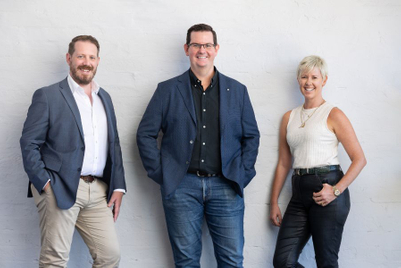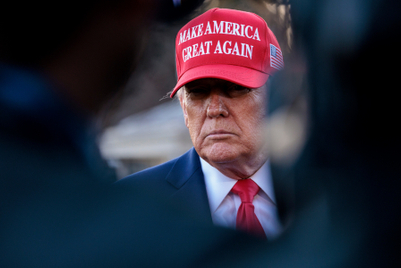
To many, B2B marketing has traditionally been jargon-laden and dense, weighed down by work that hammers business targets with dreary copy, imagery and promises of solutions to their problems.
But we're seeing real change in this category with tech companies such as Microsoft and Apple, healthcare providers such as Cigna, and financials like Manulife aiming to elevate B2B campaigns creatively.
B2B creativity in action
Tech giant Microsoft is long-used to targeting businesses with the technical superiority of its products. However, earlier this year, the company decided to humanise Teams, its collaboration tool that has become ubiquitous through the pandemic. Rather than shoot an big-budget campaign, it instead turned to people on Teams to shoot this campaign themselves after the success of more human Teams campaigns globally.
Working with global teams, MRM Singapore created the Real People campaign across four markets in Asia. The campaign was shot remotely using Teams with no directors, actors and film crew, and the agency created a series of films showing businesses connecting over Teams meetings and sharing work done while working apart.
Elsewhere, Unilever Food Solutions (UFS), a maker of professional restaurant ingredients, wanted to help chefs create successful dishes while also building new relationships. But how do you reach professional chefs, who rarely have a break in their busy days? Chef Nas, a chatbot, uses natural-language processing and AI to understand each chef’s specific needs. The bot serves up relevant content from UFS’s database to help them get cooking.
Whereas traditional B2B campaigns tended to offer help and practical solutions for businesses, we're also seeing B2B messaging taking this a step further by recognising the need to address social issues through purposeful communication.
A good example of this is Beyond Binary Code campaign for telco company Spark in New Zealand that seeks to push companies to build a more inclusive internet by recognising gender diversity in more online platforms.
Meanwhile, in the insurance space, businesses are used to seeing B2B ads about securing their enterprises and lower premiums. But a campaign called Tall Poppy for CGU Insurance in Australia by Thinkerbell focused on what is termed Tall Poppy Syndrome, which refers to the local malaise of bringing down tenacious people. Moreover, to make an impact, it took over an entire ad break for longer-form videos.
Using this as a metaphor, CGU Insurance said it stood up and backed small businesses owners who persevered, despite the odds. CGU Insurance would “insure ambition” the campaign stated.
Recognising this shift toward more meaningful and creative work, Cannes Lions had its first focus on B2B creativity in 2022. The Grand Prix in this category was won by Wunderman Thompson Minneapolis’ ‘Speaking in Color’ campaign for Sherwin-Williams Coil Coatings. This is an AI, voice-controlled tool that produces colours based on a memory or vision. This tool is targeted at architects and designers who build city skyscapes and iconic buildings.
Nick Handel, regional managing director, MRM APAC, says that B2B marketers are “fully embracing” creativity with their campaigns. He contends that leaders in these B2B companies are looking beyond just lead-gen to using creativity to building longer-term brand value. “Leaders are … defining meaningful roles for their brands, which not only help support short term goals but also provide the business with a strategic asset for the future,” he adds.
The case for more creative B2B
Unlike B2C campaigns, where the focus can be on longer-term brand building, B2B campaigns around specific products or services can have a narrower window. “B2B brand marketing and communication work pays more attention to practical results,” says DDB’s Beijing general manager Eason Li. So even as there is growing clamour for better-quality creative it needs to be tied into reaching audiences more accurately, attracting more traffic and ensuring commercial results.
According to a recent LinkedIn survey, 90% of senior B2B marketing leaders in APAC would prioritise “creative confidence” over performance marketing and lead-generation. The focus is on creative campaigns to improve brand recall, using storytelling and emotion, the report states.
Given this shift, agencies are increasing their focus on creativity in B2B campaigns. That also means investing in strong creative talent to do the job. In April, Dentsu hired Farrokh Madon to head creative for its B2B unit Merkle in APAC. Since then, Kiaran Geen, Merkle B2B's APAC president, says that both creative innovation and client satisfaction has improved “across the board".
He points to work for clients such as Adobe, Cisco, Mastercard, Standard Chartered as examples of this trend.
The accent on more creativity is especially strong in B2B businesses in China, India and ANA, industry leaders told Campaign. “The business goal of these brands is to build awareness and approachability among business partners,” said DDB Shanghai general manager Algra Chan.
But since these products or services will eventually be used by end consumers, their perceptions will also influence these campaigns.
In China, Intel’s Xeon X campaign in China swerved away from typical platforms used by businesses to focus on consumer-centric WeChat, Zhihu, Bilibili and Douyin for a recent campaign. It used data points to locate over 100 technology influencers across market and whittled down the list to a third of that, to front a campaign that ran on these platforms.
Intel saw an 80% increase in message recall, as well as increases in product preference and consideration metrics. “It’s not just about creative messaging, it’s about finding creative innovation in taking that message to relevant audiences, in the most relevant way possible,” says Geen.
Merkle’s creative capabilities have also been strengthened with the addition of Gyro and Merkle DWA to its ranks in February this year.
Despite this creativity boost, industry leaders say that APAC yet lags the globe in producing standout creative B2B work. Examples of this standout creative work are Apple’s Working from Home, HP’s The Wolf and Ryan Reynolds’ pepper-eating MNTN placements.
Besides better-quality creative, agencies and marketers also need to fine-tune timing of their campaigns. For example, pushing detailed product functionality with dense tech specs just as they have started researching potential suppliers may be off-target.
Instead, B2B campaigns should create desire and demand before these users get involved, says Geen of Merkle APAC. Creativity in the B2B sphere isn’t limited to just the artistic side alone, it can also include creative ways to innovate for clients across media and other channels—with a focus on the sweet-spot between creativity, technology and data.
While it may be important to demand better creative work, marketers and agencies need to pay attention to nuances in the B2B field. For instance, a one-size-fits-all approach doesn’t work, given the nuances in specific markets, and agencies are being tasked with using a global platform as a foundation to make local creative campaigns.
Secondly, agencies are also being challenged with sifting through reams of data to create more “relevant and relatable” creatives for these companies. “Our own research shows that for better or worse, the customer experience gap between the winning and the losing B2B brands has narrowed by 51% since 2020,” says Geen.
For B2B companies, better creative is also tagged with growing demand to greater effectiveness of marketing spend and a push to achieve greater lifetime value from customers and prospects. For existing customers, creative campaigns need to be more sharply targeted.
For potential clients, the focus is on improved engagement from a brand “all the way through to demand and lifetime value enhancement,” says Handel. This also means there is greater demand for adjacent offerings such as marketing automation and first-party data-management.





.jpg&h=334&w=500&q=100&v=20250320&c=1)
.jpg&h=334&w=500&q=100&v=20250320&c=1)

.jpg&h=334&w=500&q=100&v=20250320&c=1)

.jpg&h=334&w=500&q=100&v=20250320&c=1)
.jpg&h=334&w=500&q=100&v=20250320&c=1)







